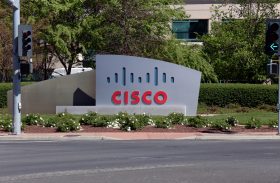Apstra Intros Ethernet VPN, Gets Tier-1 Operator

Intent-based networking startup Apstra has been on the move lately, announcing a series of upgrades to its networking analytics and orchestration software as well as the fact that it has been adopted in a tier-1 service provider network (unnamed).
Apstra announced yesterday (June 5) that it has updated its flagship AOS product to version 2.2, which adds features for multi-vendor networking and Ethernet Virtual Private Networks (EVPNs) to connect data centers.
The EVPN feature enables AOS to set up multi-tenancy and inter-rack L2 connectivity through Ethernet VPN. This will enable data center operators to set up Ethernet-based VXLANs using a one-button touch and create multiple security zones. Apstra says that existing tools for setting up EVPNs across switching environments are complex and that AOS will simplify the configuration, automating the networks, and enabling troubleshooting.
Apstra also appears to be making progress on the customer side. Just two months after publicly announcing Yahoo Japan as its first customer, Apstra said that integrator Awnix, a leading provider of cloud services and products, has deployed the first AOS-supported deployment of OpenSwitch (OPX) on Dell Z9100-ON switches in a Tier 1 service provider production network. The telecom service provider is using the technology to build an OpenStack-based cloud for an Infrastructure as a Service (IaaS) network infrastructure offering.
What's interesting about the announcement is that it indicates a major service provider has elected to using a wide range of open networking tools to build the cloud. OpenSwitch platform is an open source, Linux-based network operating system (NOS) for disaggregated switches built around Open Compute (OCP)-compliant hardware.
Other features included in Apstra's AOS 2.2 announcement:
- Addition of Intent-Based Analytics (IBA) enhancements, extensible telemetry, and blueprint discovery.
- Enterprise features including TACACS+ support and customizable RBAC roles, which enables integration with existing authentication systems and allows administrators to customize AOS roles to match organization requirements. This also provides an audit trail.
- New hardware and software choices, including Dell EMC and Mellanox devices, OpenSwitch (OPX), the latest version of Cumulus (3.6), Ubuntu 16.04 for servers, including the Free-Range-Routing (FRR) routing stack.
- IPv6 Phase 1, which enables customers to leverage IPv6 to conserve IPv4 space on fabric links.














